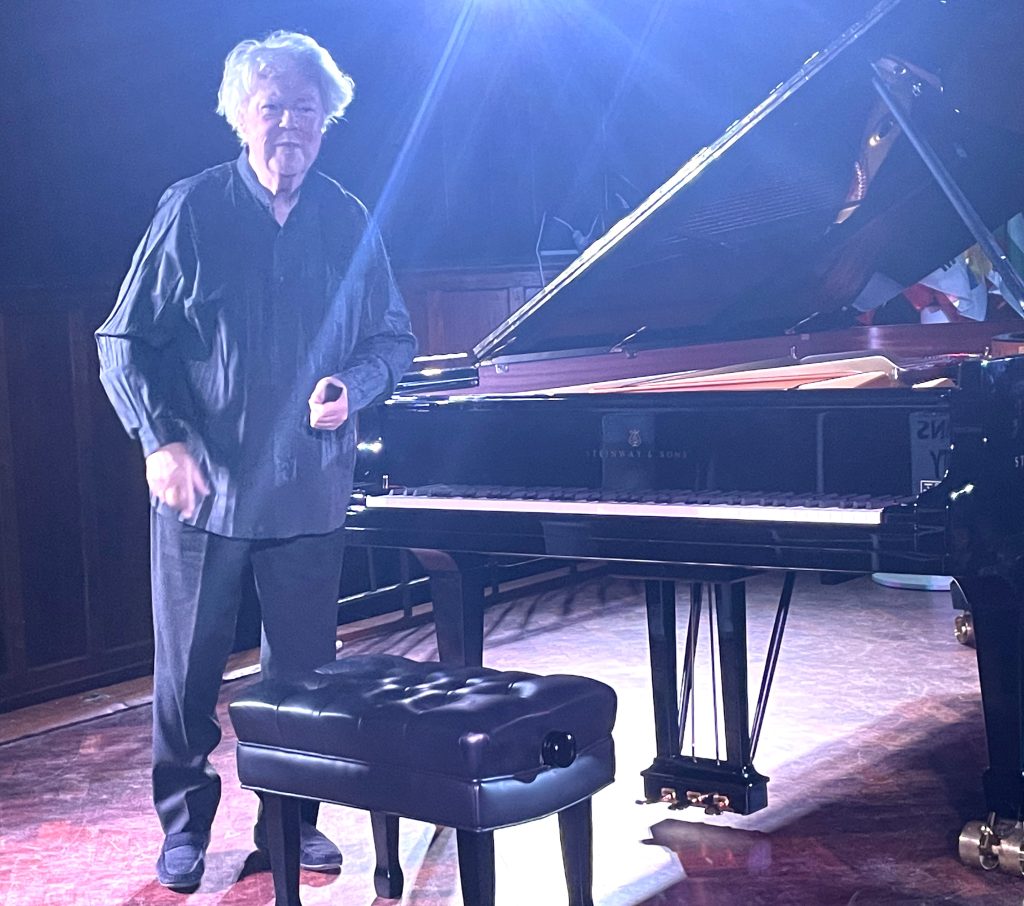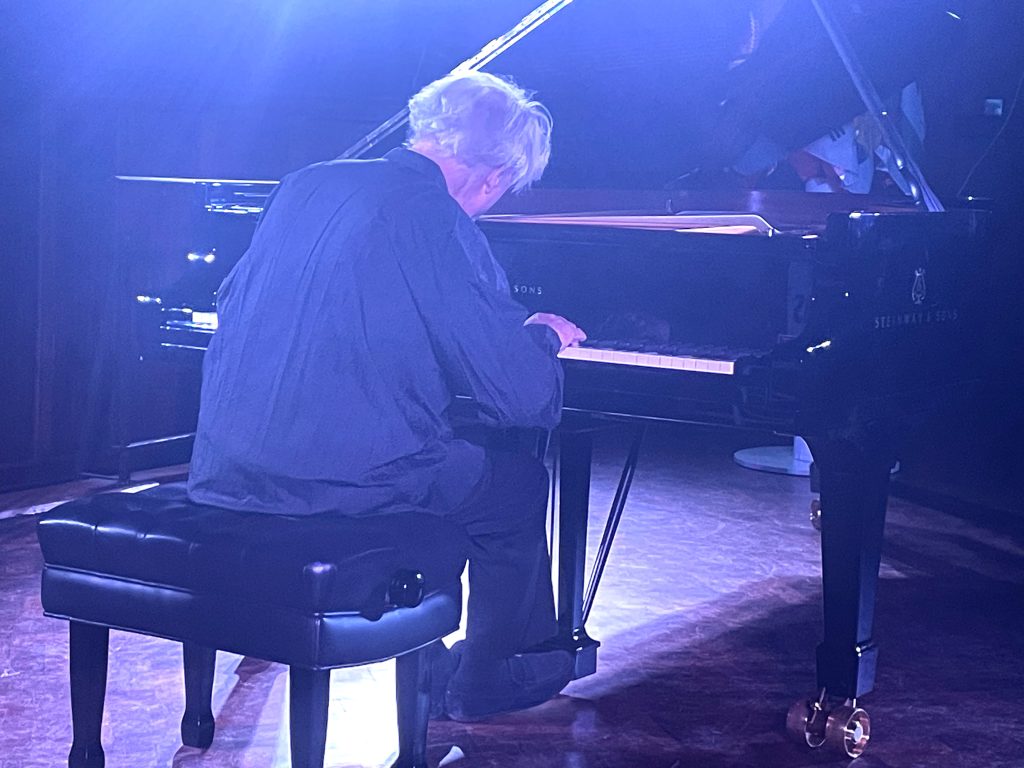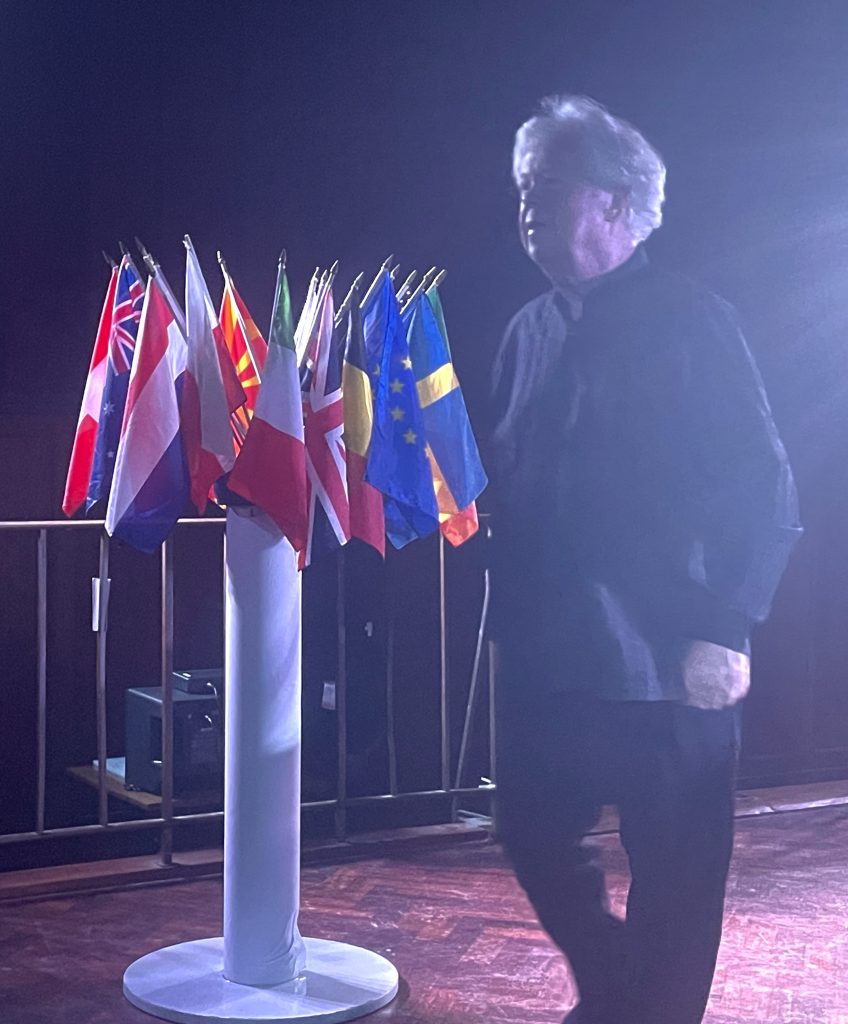
By Kevin T McEneaney
On July 24, at the Gerard Manley Hopkins Literary Conference in Newbridge, Ireland, Hans Pålsson, the noted Swedish pianist, presented an unforgettable piano concert. Hans opened with Wolfgang Amadeus Mozart’s Piano Sonata No. 8 in A Minor, KV 310, one of Mozart’s most enigmatic compositions, written when he was twenty-two. Mozart rarely ever composed in minor keys, which he associated with melancholy. His mother arrived in Paris to visit him in 1788, and she shortly died. The emotional intensity of this work remains one of the most extraordinary compositions in piano repertoire. At the time, Parisians were nonplussed by the work. The work appears to mourn the death of his mother while promising to achieve greatness in her memory.
Pålsson captured a progressive drama of tragedy, grief, aspiration, and commitment to music, while each musical gesture reverberated with intense drama. I have heard this sonata played before, yet I was never on the edge of my seat, breathing the emotional intoxication of this dramatic composition. No wonder Paris was nonplussed!
The opening Allegro delivers an angular melody with repeated left-hand chords and dotted rhythms, pealing dissonances which will not be placated. The Andante attempts to offer solace that casts a long shadow, failing to deliver the hinted consolation of the Allegro. The dotted rhythms of the Presto offered a whirlwind of lament while pledging that the death of his mother will inspire greater creativity as he enshrines her memory! This performance tangibly captured current agony and future ecstasy!

Sonata No. 31 in A flat major, Op. 110 by Ludwig van Beethoven is also a meditation on death, the first draft being completed on Christmas Day in 1821, when Beethoven was in poor health. The light opening cantabile offers a note of seasonal cheer but turns to an Adagio of lament, evoking beauty with a poetic fugue which turns to G major, then wanders into A-flat. The intense chordal style offers mystery and transcendence, perhaps beyond any other composition ever scored, as it reaches despair and inexplicably, surprising hope, which dances into an affirmation of Christian belief, despite the prospect of mortality, a theme probably commemorating the death of Josephine, his Immortal Beloved. This was a complex work that evoked deep astonishment. As with the Mozart, Pålsson’s brief pauses were emotionally dramatic, and once more I felt transported to another world….
After a brief Intermission, Hans performed Piano Sonata in B flat, D 960 by Franz Schubert, the last of his three piano sonatas composed in 1828. These last three sonatas were not published until ten years after he died in 1828, this last sonata being the most personal of the set. (Most commentators believe Schubert died of syphilis, but to me his symptoms align more closely with typhoid fever, which was raging in his neighborhood at the time.)
Influenced by Beethoven’s Sonata No. 31 in A flat major, Op. 110, the opening Allegro evokes a calm beauty despite some agitation in the left hand, which hints at a veiled melancholy that becomes more obvious in the following Andante. The longing of Schubert’s romantic Mignon songs (his settings of Goethe’s love poems) is referenced. We have entered the conflict of light versus dark theme. The Scherzo deepens this epic contrast. The concluding Allegro gradually grows more declamatory, concluding in vivid, dynamic contrast. The finale on the upper register appears to ask, as if from the voice of an innocent child: “Must we all die?” Then the thunder of the deeper register replies with certain, shocking clangor: “Yes, must all die!” The dialectic of brief beauty and final mortality is fiercely consummated!
This was an unforgettable, masterly concert in a small town in Ireland, where transcendent mortality was dramatized with lightning effect as we recall and cherish what time we have left on this spinning globe!
